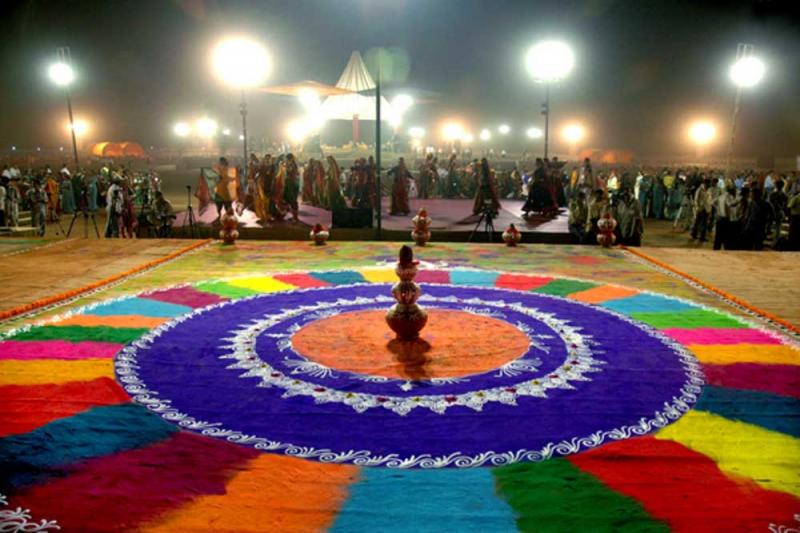Devoted to Goddess Durga, the festival of Navratri symbolises the triumph of good over evil.
Each of the nine days is dedicated to a specific form of goddess Durga and begins with the performance of aarti. Devotees believe all their prayers will be answered especially during this auspicious festival. On the first three days of the festival, devotees pay reverence in different ways. On the first day, Durga is worshipped in the form of Shakti. This day also witnesses the growing of seeds and farmers closely watching them sprout. Goddess Parvati is worshipped on the second day to signify triumph of good over evil. The third day of Navratri is for Goddess Kali, who represents a mature woman. The fourth and fifth days are dedicated to Goddess Lakshmi when she is worshipped for wealth, prosperity and peace. The sixth day is dedicated to Goddess Saraswati, the Goddess of learning. I saw many households collect books and place them in front of Goddess Saraswati, and pray for good education and success. On the eight and the ninth day, kanya puja is performed when nine young girls representing nine forms of Goddess Durga are worshipped. Many of my friends in Ahmedabad sast during Navratri as it is believed that the body’s immunity is at an all time low during this time. The main highlight of this festival is the folk dance of Gujarat called garba. A dance form that originated in Gujarat, it is mainly performed during the nine day festival of Navratri in Ahmedabad. Garba comes from the Sanskrit word garbh (womb). Many traditional garbas are performed around a lamp or a picture or statue of the Goddess Shakti. Modern garba is heavily influenced by DandiyaRaas, a dance traditionally
There is an air of festivity, pomp and gaiety during Navratri when the city of Ahmedabad comes alive in a myriad hues. I am not from the city and am visiting friendsduing the festival. So I am all the more delighted to see the streets drenched in colour, and shops full of colourful costumes and ornaments. People are busy shopping for the nine nights of Navratriperformed by men. This is a highenergy dance that is seen at most venues in Ahmedabad. Many lawns and clubs in the city host DandiyaRaas which sees people from all walks of life dance away through the night. It was amazing to see both men and women dance away, decked in colourful costumes. Women wear ghaghracholis — a three-piece dress decorated with beads, shells, mirrors, stars, and embroidery work and paired with a choli. The choli is teamed with a ghagra — a flared, skirt-like bottom and dupatta, which is usually worn in a traditional Gujarati manner. The men were wearing a short round kurta, pyjamas above the knees and pagadis made of bandhinidupatta. The women adorned themselves with jhumkas (earrings), necklaces, bindi, kamarbandh, payal and mojiris. It was a colourful sight to behold.

